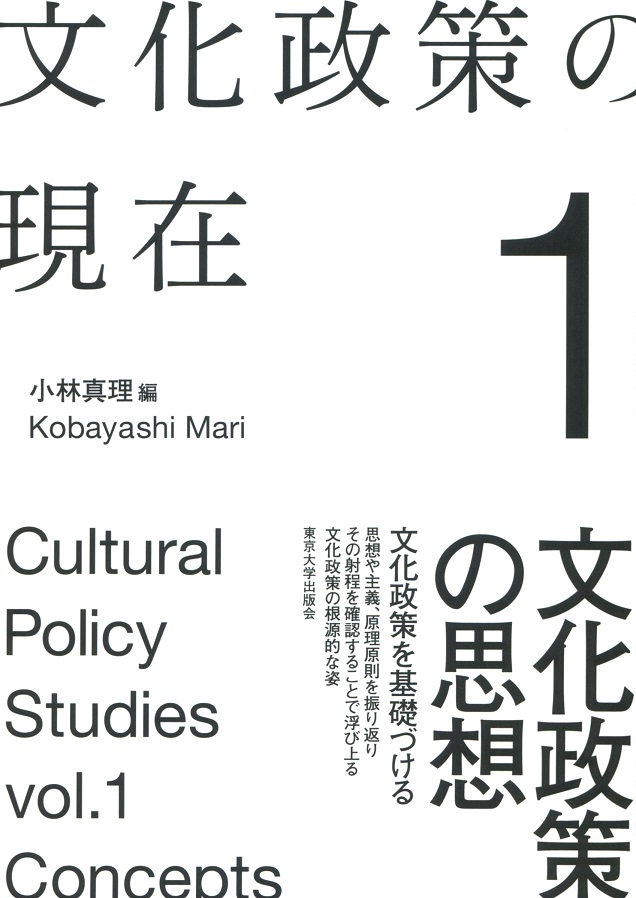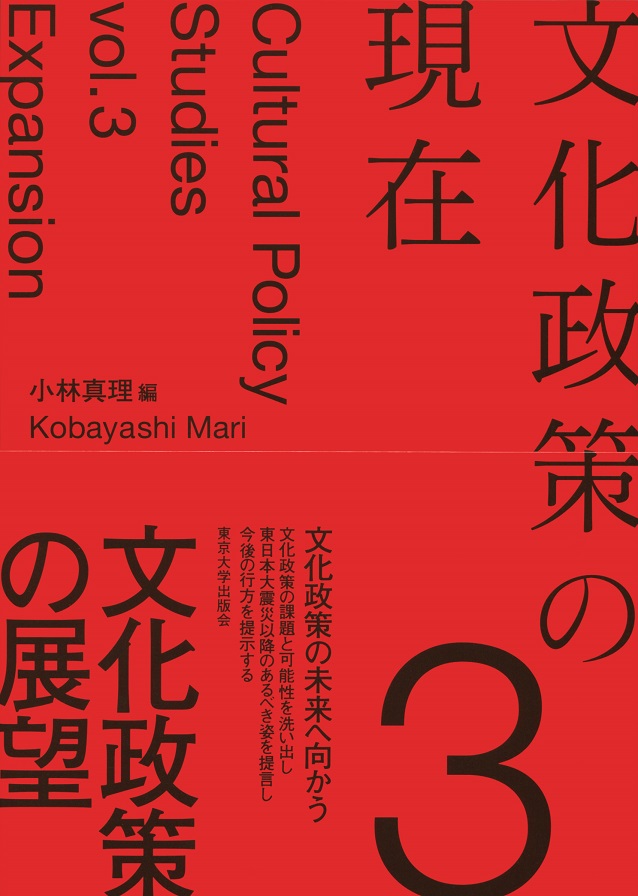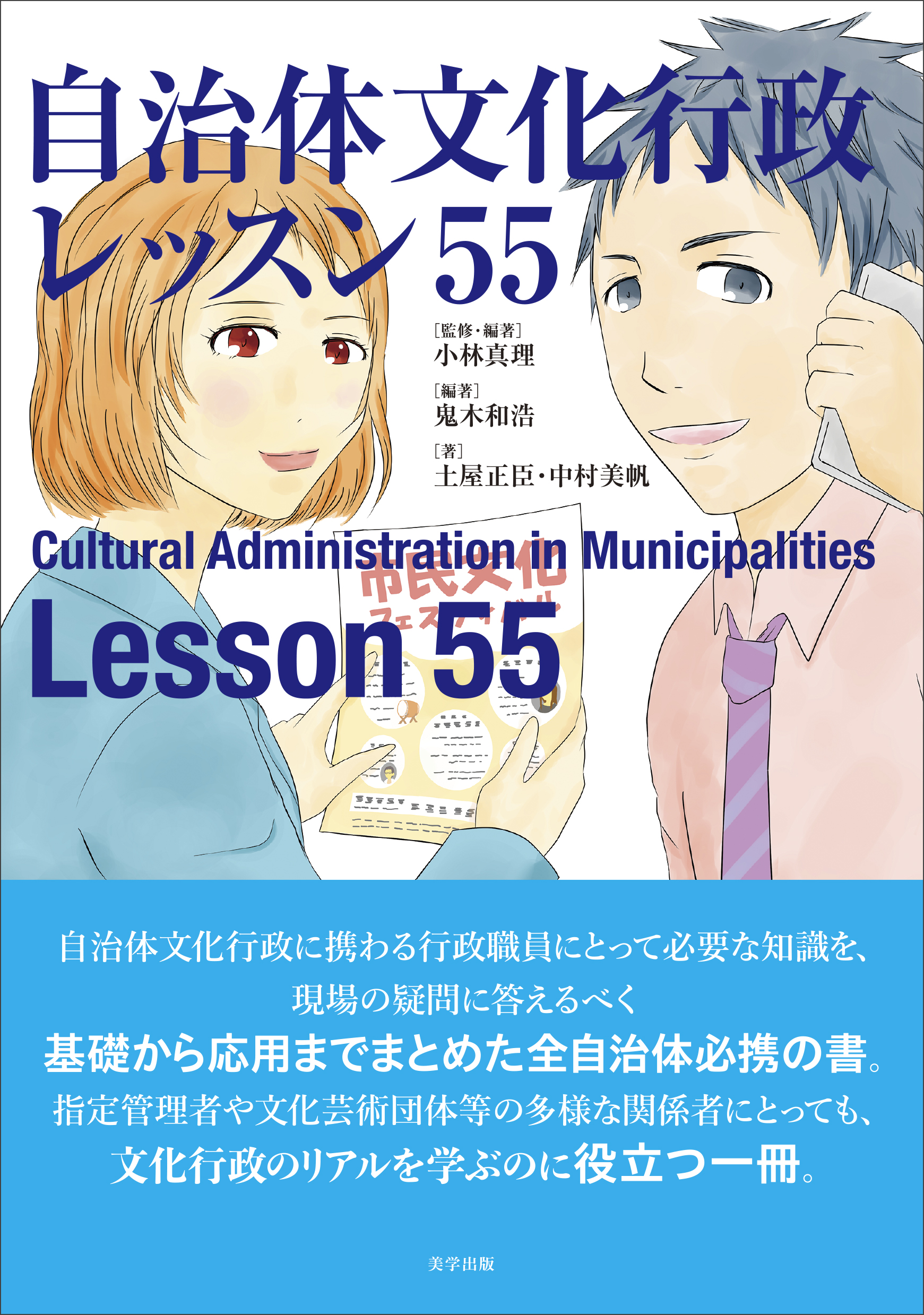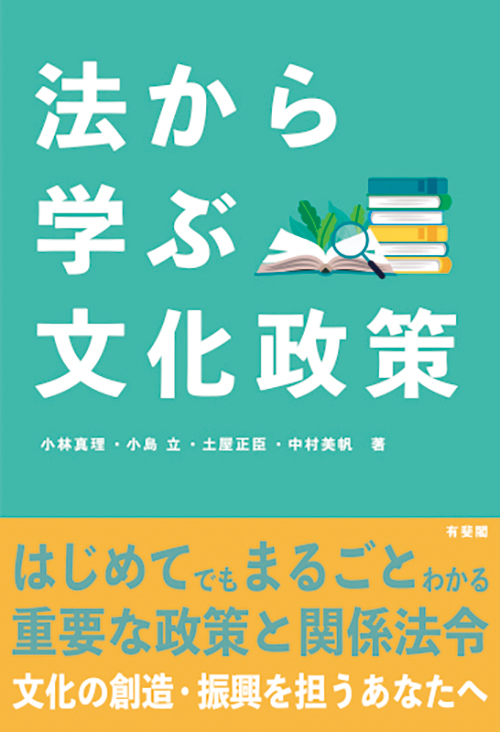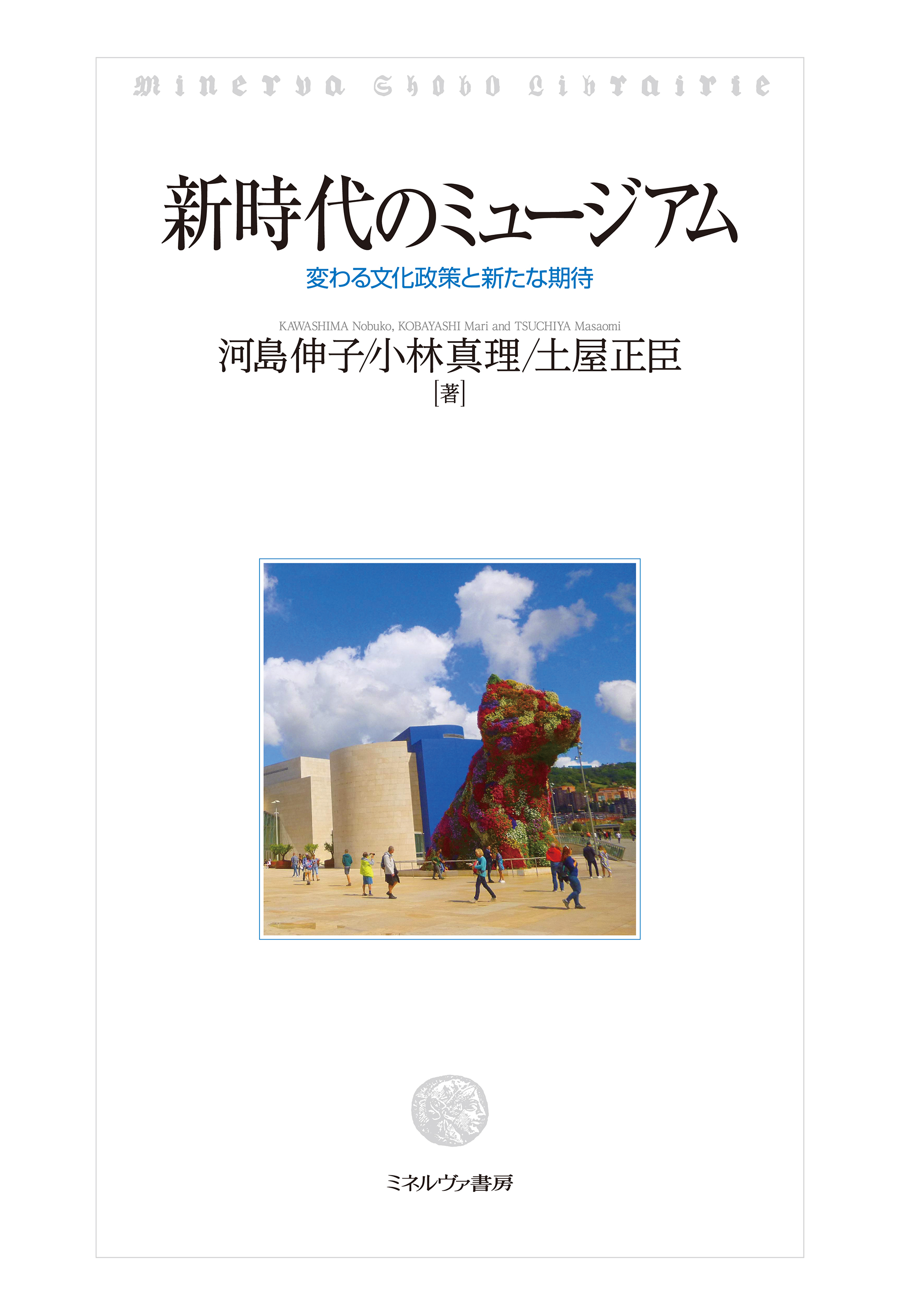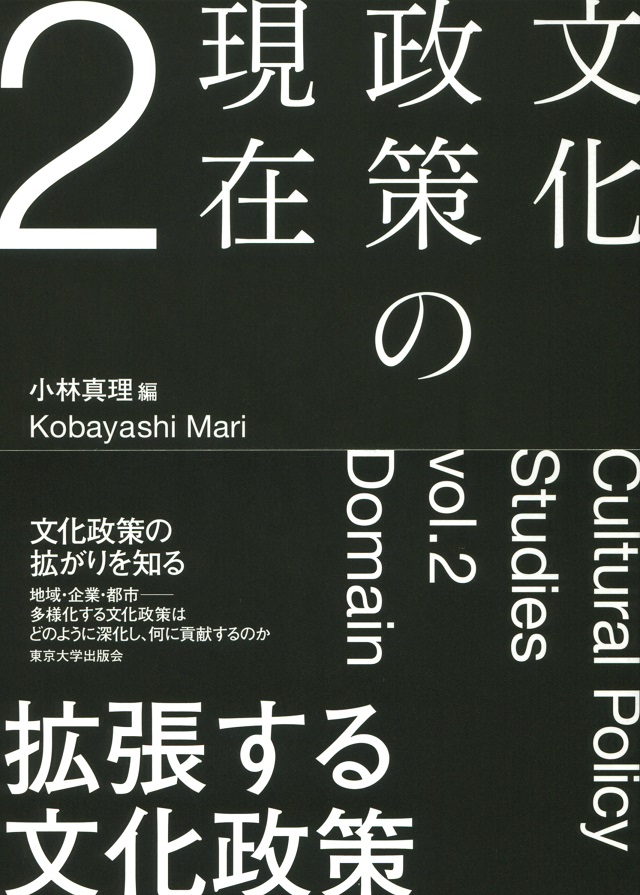
Title
Present Cultural Policy Kakucho-suru Bunka Seisaku (Vol.2 Expansion of Cultural Policy)
Size
256 pages, A5 format
Language
Japanese
Released
March 23, 2018
ISBN
978-4-13-003496-8
Published by
University of Tokyo Press
Book Info
See Book Availability at Library
Japanese Page
This book is the second volume in the series Present Cultural Policy.
Volume 2, “The Expansion of Cultural Policy,” goes beyond the practice of cultural policy in the narrow sense of protecting cultural properties, promoting the arts, and popularizing the arts to form a nation-state or a civil society (which have been the central challenges of cultural policy) to examine the situation in which the focus is on the functions of culture and the arts. For example, it considers how the object of policies has changed or, when the focus is on the external ripple effects outside of culture and the arts, the domains in which policies have been developed. Most people consider the word “policy” in terms only of government or administration, but this volume shows that the centers of policy go beyond both.
This means that those who form and practice various aspects of cultural policy have become increasingly diverse. Part 1, “Domains,” presents a case in which the objects of cultural policy shift from the people called artists, who possess specialized skills and provide culture and art to society, to the people who receive them. It refers to the principles of cultural policy in Korea and, simultaneously, to the way in which art stimulation policies centered on London, on the upper classes, and on the high arts have expanded to include objects in other regions, based on the way those arts centers are established in England. It also looks back at the origin points of the elements called cultural facilities.
Part 2, “Policy Concepts,” takes French cities as an example to describe a case in which, while national boundaries are ambiguous due to the formation of a single market, cities or regions are endowed with the strength to compete culturally with other cities while reconfirming their identities. “Cultural Policy and Social Inclusion” reexamines the object and domain of a cultural policy based on the concept of social inclusion/society inclusion. The term “cultural diplomacy” has recently come into use in the field of diplomacy, but it is used here in a different sense than previously, when it was used in international cultural exchanges. This chapter also considers whether creative city theory, developed while focusing on the “creativity” of culture or arts, or creative cities as a new industrial field, has transcended urban theory to contribute to the transformation of the existing industrial structure.
Part 3, “Diversification of Bearers,” which focuses on those who will put policy into a wider practice, clearly shows how private companies, cultural promotion bodies, art non-profits, non-profits that support art non-profits, and even private citizens will be involved in this process and what challenges they will face.
(Written by KOBAYASHI Mari, Professor, Graduate School of Humanities and Sociology / 2018)



 Find a book
Find a book


